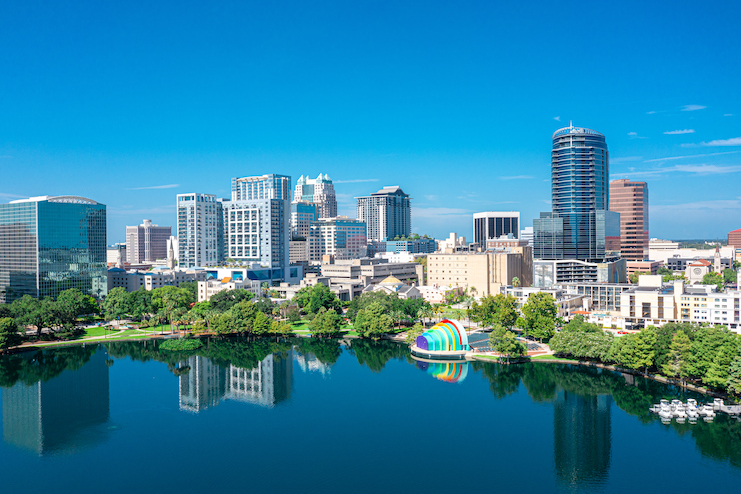
AI is everywhere right now. It’s in your newsfeed, in the trade magazines, at the hotel conferences, and yes, even creeping into those late-night WhatsApp chats with fellow operators. The promises are shiny: faster check-ins, smarter pricing, happier guests, more efficient staff.
But here’s what I’ve learned (and, yes, what I’ve been guilty of myself): AI doesn’t fix broken workflows. It amplifies them.
If the underlying process is clunky, AI just makes the clunk louder. If the workflow is smooth, AI turns it into a flow. And in hotels, flow is the difference between firefighting chaos and delivering the kind of invisible magic guests rave about.
Why We Keep Making the Same Mistake
I’ve fallen for it before. Maybe you have too.
You see a demo of an AI assistant chatbot that promises to cut front desk queues in half. You get excited, because who doesn’t want to speed things up for tired guests after a red-eye flight? So, you trial it… and suddenly you’ve got an AI assistant chatbot collecting data, but the line at the desk is just as long. Staff are still juggling manual ID checks, payment verification, and key programming. Guests don’t care that AI was involved; they only care that they waited fifteen minutes to get to their room.
That’s the mistake: we layer AI onto an old workflow instead of rethinking the workflow itself. And then we blame AI when things are not working.
And it’s not just the front desk. I’ve seen it (and tried it) in revenue management too. Plugging a fancy AI pricing tool into a system still run by daily Excel exports doesn’t make your rates smarter; it just gives you the same delays dressed up with more dashboards.
Or staff scheduling: I remember trying an AI tool that promised to optimize shifts. But guess what? When you’re still managing swaps in WhatsApp groups and dealing with last-minute sick calls, the tool just added complexity. The core workflow hadn’t changed.
A Road Trip Analogy (and a Bag of Snacks)
The best way I can describe it is with a road trip analogy.
When you’re staring at mile markers, the drive feels endless. But load up a great playlist, bring good company, and keep a tote bag of snacks within reach, and suddenly the hours fly.
Hotel workflows are like that. Bad workflows force staff to stare at the “mile markers” of inefficiency, every redundant step, every manual handoff, every “we’ve always done it this way” moment. Adding AI to that doesn’t make it smoother. It just makes them notice the pain faster.
Good workflows create flow. AI accelerates that flow. It turns the drive from a drag into a ride you barely notice.
Amplification: AI’s Real Role
That’s why I keep coming back to this principle: AI is an amplifier.
If the workflow is broken, AI makes the cracks show faster. If the workflow is solid, AI makes it shine brighter.
It’s like a microphone. Give it to Adele and she’ll move you to tears. Give it to me at karaoke night and… well, you’ll hear the flaws a lot louder.
I’ve been on both sides of that microphone. And in hotels, that amplification effect is brutal because guests are the ultimate judges. They don’t care whether it’s AI-powered. They only care if it’s seamless.
The Cost of Getting It Wrong
And let’s be honest, the stakes aren’t small.
Downtime in IT systems already costs industries an average of $14,000 a minute. Translate that to hotels: abandoned bookings, frustrated guests heading to a competitor, or staff so overloaded they burn out.
But there’s also a subtler cost. Every time AI fails because we bolted it onto an outdated process, it chips away at trust. Staff roll their eyes. Guests shrug. Leaders lose confidence. And suddenly, “AI” becomes another buzzword instead of a tool that could transform us.
What To Do Instead: Redesign, Then Automate
The better way is harder but worth it: redesign first, automate second.
I’ve learned a long way. More than once, I rushed to adopt a tool without rethinking the process. The result? Twice the headache, half the benefit.
Here’s the shift:
Instead of asking, “What AI can we add here?”, start by asking, “If we rebuilt this workflow from scratch today, how would we design it?”
What would check-in look like if you weren’t bound by paper forms and outdated PMS integrations? What would revenue management look like if Excel had never existed? What would staff scheduling look like if communication flowed in real-time?
Once you have that map, AI makes sense. That’s when it stops being a shiny object and starts being the turbo boost.
A Fun Reminder: Car, Map, Fuel
I like to think of it like a road trip again:
- The car is AI. Fast, powerful, exciting.
- The map is the redesigned workflow. Without it, you’ll just drive in circles.
- The fuel is clean, reliable data and governance. No fuel, no journey.
I’ve definitely tried to drive the AI car without a map or fuel before. And just like in real life, it doesn’t get you far.
Invisible Wins Are the Best Wins
Here’s the irony: the best AI in hotels is invisible.
Guests don’t walk away saying, “That chatbot was incredible.” They walk away saying, “Wow, check-in was smooth.”
They don’t gush over predictive models. They say, “The rate felt fair, and I booked in seconds.”
They don’t cheer for AI scheduling tools. They just noticed that the staff were calm, present, and actually had time to smile.
That’s the beauty of redesign + AI. Tech fades into the background. What shines is the experience.
Where Leaders Should Start
If you’re serious about making AI work in your hotel, here’s my challenge: pick three workflows right now. One guest-facing. One revenue-facing. One staff-facing.
Map them. Spot the bottlenecks. Ask what you’d do differently if you were building from scratch.
Only after that should you ask, “Where does AI fit in?”
And when you measure success, don’t just look at costs saved. Measure time. Time reclaimed for staff. Time shaved off the guest journey. Because in hospitality, time really is the most valuable currency we’ve got.
Why This Matters More Than Ever
Guests’ attention spans are shorter than ever. Online, you’ve got about 2.5 seconds to catch them before they scroll. On property, they’re expecting instant service. Competitors are experimenting, and late adopters may never catch up.
But moving fast doesn’t mean bolting on AI. It means building better workflows now, so when you layer in automation, it feels effortless.
And believe me, I say this as someone who has tried the shortcuts. They don’t work. AI is a collaborative learning effort. We’re all figuring it out together. The hotels that treat it that way, curious, experimental, willing to rethink their foundations, will be the ones that win.
Why AI Is a Different Kind of Shift
AI isn’t just another tool on the shelf. It’s not like adopting a new PMS module or swapping out your booking engine. This is a paradigm shift, and that’s exactly why so many hotels are stumbling.
In past tech waves, you could “bolt on” new systems. Cloud hosting, CRM integrations, and mobile booking engines worked reasonably well, even if your workflows weren’t perfect. You could patch things, smooth them over, and get incremental wins.
But AI doesn’t work that way. It doesn’t sit quietly on top of your old processes. It actively amplifies them. If your check-in flow is slow, AI makes the slowness more obvious. If your revenue management is lagging in real-time, AI won’t save you; it will just give you more stale insights faster.
That’s why the workflow matters more than ever. AI isn’t additive; it’s multiplicative. It scales the DNA of whatever you feed it. And in hotels, where every guest interaction and every staff handoff is high-stakes, that amplification can mean the difference between a glowing five-star review and a frustrated guest who never comes back.
For leaders, this is both a warning and an opportunity. Those who get the workflow right will find AI to be a game-changing accelerator. Those who don’t may end up reinforcing inefficiency at scale and losing ground to competitors who did the harder work upfront.
Closing Thought: From Legacy to Flow
The future of AI in hotels isn’t about robots at the front desk or gadgets in the guest room. It’s about creating flow.
Flow for staff, who spend less time fighting systems and more time connecting with guests. Flow for guests, who spend less time waiting and more time enjoying. Flow for revenue, where opportunities aren’t missed because of lagging processes.
AI by itself isn’t the answer. AI plus redesigned workflows are.
And yes, I’ve learned this the hard way. Maybe you have too. But that’s okay. Because if AI has taught us anything so far, it’s that real magic happens when we learn, adapt, and build together.

